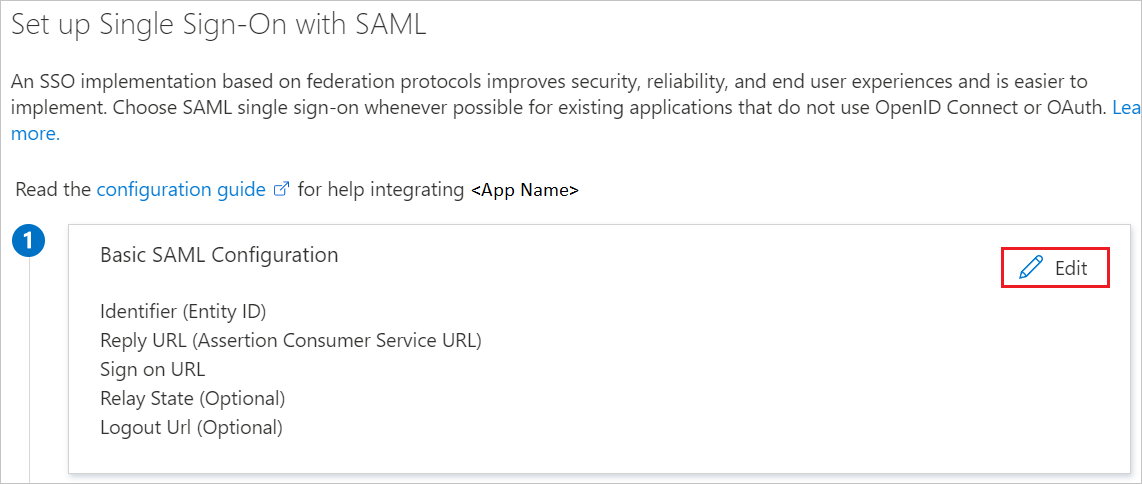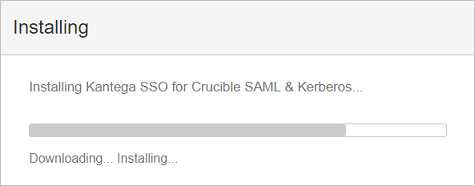Note
Access to this page requires authorization. You can try signing in or changing directories.
Access to this page requires authorization. You can try changing directories.
In this article, you learn how to integrate Kantega SSO for FishEye/Crucible with Microsoft Entra ID. When you integrate Kantega SSO for FishEye/Crucible with Microsoft Entra ID, you can:
- Control in Microsoft Entra ID who has access to Kantega SSO for FishEye/Crucible.
- Enable your users to be automatically signed-in to Kantega SSO for FishEye/Crucible with their Microsoft Entra accounts.
- Manage your accounts in one central location.
Prerequisites
The scenario outlined in this article assumes that you already have the following prerequisites:
- A Microsoft Entra user account with an active subscription. If you don't already have one, you can Create an account for free.
- One of the following roles:
- Kantega SSO for FishEye/Crucible single sign-on enabled subscription.
Scenario description
In this article, you configure and test Microsoft Entra single sign-on in a test environment.
- Kantega SSO for FishEye/Crucible supports SP and IDP initiated SSO.
Add Kantega SSO for FishEye/Crucible from the gallery
To configure the integration of Kantega SSO for FishEye/Crucible into Microsoft Entra ID, you need to add Kantega SSO for FishEye/Crucible from the gallery to your list of managed SaaS apps.
- Sign in to the Microsoft Entra admin center as at least a Cloud Application Administrator.
- Browse to Entra ID > Enterprise apps > New application.
- In the Add from the gallery section, type Kantega SSO for FishEye/Crucible in the search box.
- Select Kantega SSO for FishEye/Crucible from results panel and then add the app. Wait a few seconds while the app is added to your tenant.
Alternatively, you can also use the Enterprise App Configuration Wizard. In this wizard, you can add an application to your tenant, add users/groups to the app, assign roles, and walk through the SSO configuration as well. Learn more about Microsoft 365 wizards.
Configure and test Microsoft Entra SSO for Kantega SSO for FishEye/Crucible
Configure and test Microsoft Entra SSO with Kantega SSO for FishEye/Crucible using a test user called B.Simon. For SSO to work, you need to establish a link relationship between a Microsoft Entra user and the related user in Kantega SSO for FishEye/Crucible.
To configure and test Microsoft Entra SSO with Kantega SSO for FishEye/Crucible, perform the following steps:
- Configure Microsoft Entra SSO - to enable your users to use this feature.
- Create a Microsoft Entra test user - to test Microsoft Entra single sign-on with B.Simon.
- Assign the Microsoft Entra test user - to enable B.Simon to use Microsoft Entra single sign-on.
- Configure Kantega SSO for FishEye/Crucible SSO - to configure the single sign-on settings on application side.
- Create Kantega SSO for FishEye/Crucible test user - to have a counterpart of B.Simon in Kantega SSO for FishEye/Crucible that's linked to the Microsoft Entra representation of user.
- Test SSO - to verify whether the configuration works.
Configure Microsoft Entra SSO
Follow these steps to enable Microsoft Entra SSO.
Sign in to the Microsoft Entra admin center as at least a Cloud Application Administrator.
Browse to Entra ID > Enterprise apps > Kantega SSO for FishEye/Crucible > Single sign-on.
On the Select a single sign-on method page, select SAML.
On the Set up single sign-on with SAML page, select the pencil icon for Basic SAML Configuration to edit the settings.

On the Basic SAML Configuration section, if you wish to configure the application in IDP initiated mode, perform the following steps:
a. In the Identifier text box, type a URL using the following pattern:
https://<server-base-url>/plugins/servlet/no.kantega.saml/sp/<uniqueid>/loginb. In the Reply URL text box, type a URL using the following pattern:
https://<server-base-url>/plugins/servlet/no.kantega.saml/sp/<uniqueid>/loginSelect Set additional URLs and perform the following step if you wish to configure the application in SP initiated mode:
In the Sign-on URL text box, type a URL using the following pattern:
https://<server-base-url>/plugins/servlet/no.kantega.saml/sp/<uniqueid>/loginNote
These values aren't real. Update these values with the actual Identifier, Reply URL and Sign-on URL. These values are received during the configuration of FishEye/Crucible plugin which is explained later in the article.
On the Set up Single Sign-On with SAML page, in the SAML Signing Certificate section, select Download to download the Federation Metadata XML from the given options as per your requirement and save it on your computer.

On the Set up Kantega SSO for FishEye/Crucible section, copy the appropriate URL(s) as per your requirement.

Create and assign Microsoft Entra test user
Follow the guidelines in the create and assign a user account quickstart to create a test user account called B.Simon.
Configure Kantega SSO for FishEye/Crucible SSO
In a different web browser window, sign in to your FishEye/Crucible on-premises server as an administrator.
Hover on cog and select the Add-ons.

Under System Settings section, select Find new add-ons.

Search Kantega SSO for Crucible and select Install button to install the new SAML plugin.

The plugin installation starts.

Once the installation is complete. Select Close.

In the Kantega SSO for Crucible SAML & Kerberos page, select Manage.
Select Configure to configure the new plugin.

In the SAML section. Select Microsoft Entra ID from the Add identity provider dropdown.
In the Kantega Single Sign-on page, select Basic.
On the App properties section, perform following steps:

a. Copy the App ID URI value and use it as Identifier, Reply URL, and Sign-On URL on the Basic SAML Configuration section in Azure portal.
b. Select Next.
On the Metadata import section, select Metadata file on my computer.
Select Browse file to upload the metadata file that you previously downloaded, then select Next.
On the Name and SSO location section, perform following steps:

a. Add Name of the Identity Provider in Identity provider name textbox (such as Microsoft Entra ID).
b. Select Next.
Verify the Signing certificate and select Next.

On the FishEye user accounts section, perform following steps:

a. Select Create users in FishEye's internal Directory if needed and enter the appropriate name of the group for users (can be multiple no. of groups separated by comma).
b. Select Next.
Select Finish.
On the Known domains for Microsoft Entra ID section, perform following steps:
a. Select Known domains from the left panel of the page.
b. Enter domain name in the Known domains textbox.
c. Select Save.
Create Kantega SSO for FishEye/Crucible test user
To enable Microsoft Entra users to sign in to FishEye/Crucible, they must be provisioned into FishEye/Crucible. In Kantega SSO for FishEye/Crucible, provisioning is a manual task.
To provision a user account, perform the following steps:
Sign in to your Crucible on-premises server as an administrator.
Hover on cog and select the Users.

Under Users tab section, select Add user.

On the Add New User dialog page, perform the following steps:

a. In the Username textbox, type the email of user like Brittasimon@contoso.com.
b. In the Display Name textbox, type display name of the user like Britta Simon.
c. In the Email address textbox, type the email address of user like Brittasimon@contoso.com.
d. In the Password textbox, type the password of user.
e. In the Confirm Password textbox, reenter the password of user.
f. Select Add.
Test SSO
In this section, you test your Microsoft Entra single sign-on configuration with following options.
SP initiated:
Select Test this application, this option redirects to Kantega SSO for FishEye/Crucible Sign on URL where you can initiate the login flow.
Go to Kantega SSO for FishEye/Crucible Sign-on URL directly and initiate the login flow from there.
IDP initiated:
- Select Test this application, and you should be automatically signed in to the Kantega SSO for FishEye/Crucible for which you set up the SSO.
You can also use Microsoft My Apps to test the application in any mode. When you select the Kantega SSO for FishEye/Crucible tile in the My Apps, if configured in SP mode you would be redirected to the application sign on page for initiating the login flow and if configured in IDP mode, you should be automatically signed in to the Kantega SSO for FishEye/Crucible for which you set up the SSO. For more information, see Microsoft Entra My Apps.
Related content
Once you configure Kantega SSO for FishEye/Crucible you can enforce session control, which protects exfiltration and infiltration of your organization’s sensitive data in real time. Session control extends from Conditional Access. Learn how to enforce session control with Microsoft Defender for Cloud Apps.